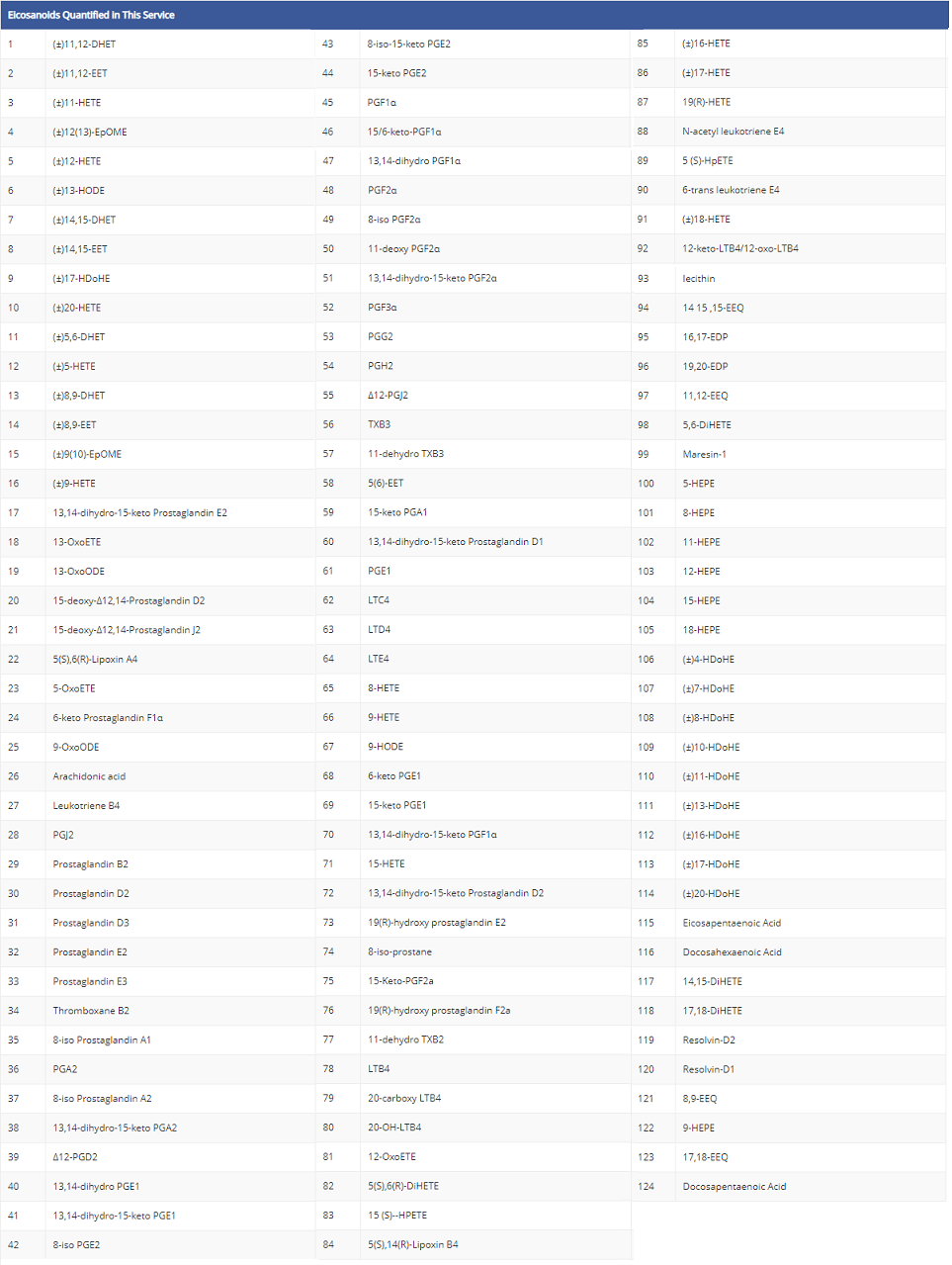Eicosanoid Analysis Service
Eicosanoid, including prostaglandin (PG), thromboxane (TX), leukotriene (LT), and lipoxin (LX), is critical signaling molecule. Prostanoid, a subset of eicosanoids, comprises PG and TX. Prostanoids are named based on the number of carbon-carbon double bonds in their molecules. Most biologically active PGs and TXs belong to the series 2 molecules with two carbon-carbon double bonds. Eicosanoids with four carbon-carbon double bonds are categorized as series 4. Initially, PGs were discovered in the prostate, and TXs were first found in platelets. LTs were first discovered in leukocytes. LXs, produced through the interaction with lipoxygenase, are inflammatory cytokine related to eicosanoids. Aspirin intake will increase the synthesis of LXs, making LXs potent regulators of inflammation. Other derivatives of eicosanoids include resolvin (Rv) and protectin (PD).
Eicosanoids play a crucial role in various physiological processes, including the inflammatory response in joints, skin, and eyes, the induction of labor, and the modulation of pain and fever. They also inhibit gastric acid secretion, regulate blood pressure through vasodilation or vasoconstriction, and control platelet aggregation and thrombosis. The most biologically significant eicosanoids are eicosanoid derivatives produced in the transformation of linoleic acid to arachidonic acid. A smaller portion of eicosanoids originates from eicosapentaenoic acid, derived from alpha-linolenic acid. Arachidonic acid is primarily stored in cell membrane phospholipids C2 and released upon activation by phospholipase A2 (PLA2).
Eicosanoids can be synthesized in all mammalian cells except red blood cells. These molecules are highly potent with even small quantities exerting significant physiological effects. At their site of synthesis, eicosanoids act locally through G protein-coupled receptors(GPCRs)-mediated signaling pathways. Eicosanoid biosynthesis occurs via two primary pathways: the cyclooxygenase pathway, in which PG and TX are produced, and the lipoxygenase pathway, in which LT is produced.
Due to their pivotal role in diseases such as asthma, cardiovascular diseases, cancer, and chronic obstructive pulmonary disease (COPD), the detection and quantification of eicosanoids are highly significant. Given their low endogenous concentrations, highly sensitive and specific analytical methods are necessary for accurate quantification. High performance liquid chromatography-tandem mass spectrometry (HPLC-MS/MS) has become a key technique for this purpose. MtoZ Biolabs offers reliable, rapid, and cost-effective eicosanoid analysis services and utilizes advanced LC-MS/MS systems for high stability, reproducibility, and sensitivity in its separation, characterization, identification, and quantification.
Services at MtoZ Biolabs
 Figure 1. Eicosanoid Analysis
Figure 1. Eicosanoid Analysis
How to order?







